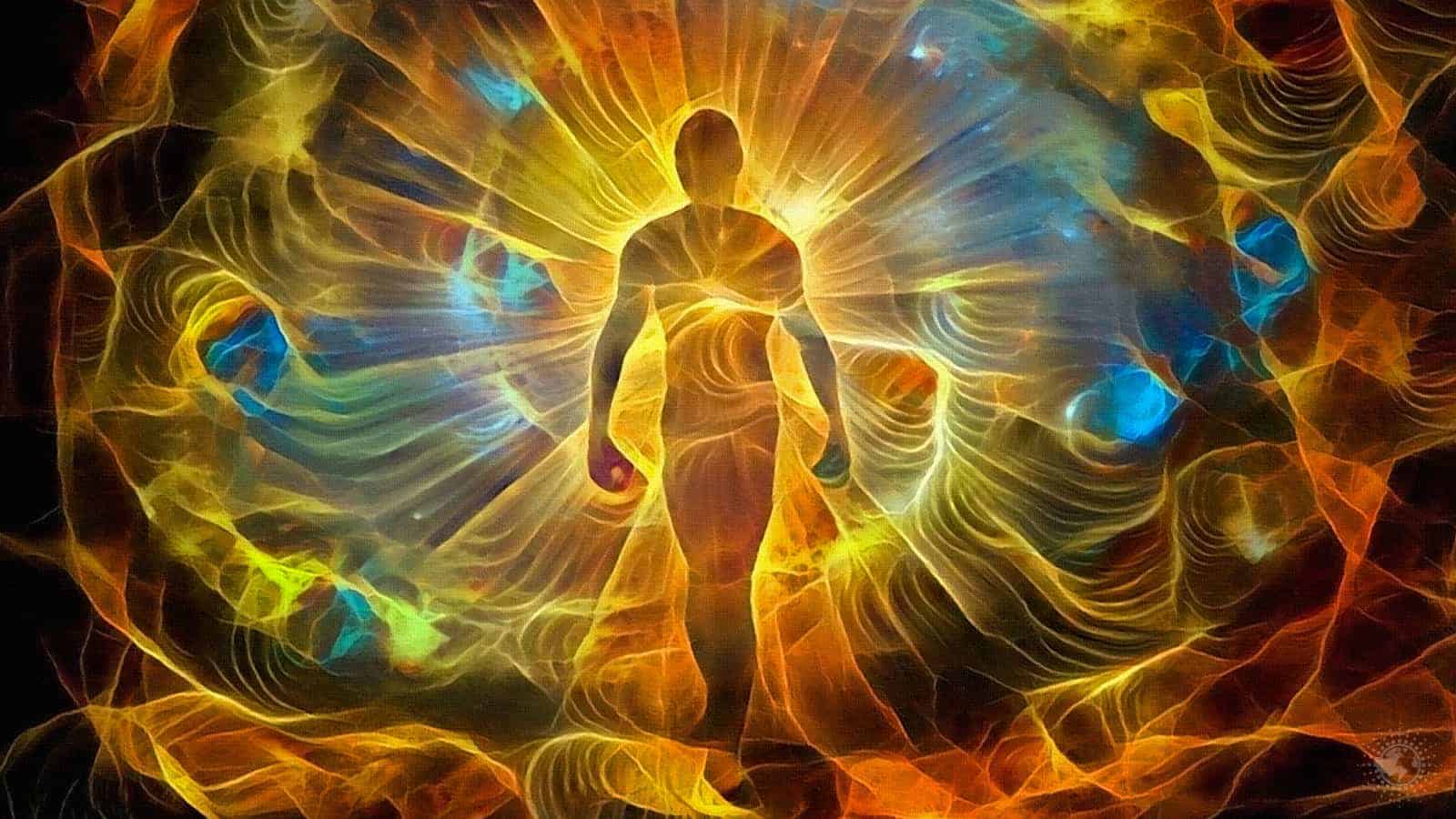Most of us go about daily life without realizing just how strange the universe is. We instead choose to focus on the practical: paying the bills, getting to work, taking care of the kids, and so on. But what if we lived in an energy verse? Some scientists assert that we do!
For those who do a bit of digging, you might find a storehouse of treasures, the implications of which can be potentially life-transforming. It will almost certainly shift how you think about existence – and you’ll never take life for granted again.
Perhaps you heard the phrase “Everything is energy” or “Energy is everything.” If you’re like me, you probably shrugged it off as some new-age bunk.
But it’s not new age. It’s science, and science concludes that everything – everything – stems from energy. The screen you’re reading from, the chair you’re sitting in, the brain you’re comprehending with, and the air you’re breathing – all of it is energy.
If you think that’s mind-bending, wait until you hear this.
Our reality may be a 3-dimensional hologram. What’s a hologram? This is is a physical recording of an interference pattern. It uses diffraction to reproduce a three-dimensional light field. Thus, the resulting mirage retains the original scene’s depth, parallax, and other properties.
Joseph Selbie, the author of “The Physics of God,” calls this holographic universe the Energy-verse.
Proof We Live in an Energy Verse
There’s a ton to unpack here, and we’re going to make it as easy to understand as possible. Let’s start first by understanding the limitations of the human senses in interpreting reality.
Point #1: Matter is a light-show illusion
“The visible world is the invisible organization of energy.” ~ Heinz Pagels, former executive director, New York Academy of Sciences
To our senses – sound, hear, taste, touch, and sight – all matter (natural material) appears to be stable. Indeed, our entire reality involves seemingly constant interaction with physical matter.
We see a solid, physical sun; sleep in a solid, physical bed; eat solid, physical food – and so on.
The fact is, however, that we only perceive about 1 percent of what’s “out there.” Our eyes detect only visible light. Our ears only pick up a small fraction of all sound frequencies. Our senses of smell, taste, and touch are equally limited.
The fact that our senses are so limited is probably a good thing. We’d quickly become overwhelmed by sensory input without such filters in place.
But what would we experience if our senses were heightened?
For one thing, we’d see that matter is a light-show illusion of vibrating energy. This includes our body, made up almost entirely of empty space.
It was Albert Einstein, who was the first to declare that matter isn’t at all what it seems. In 1905, Einstein published his paper on the Special Theory of Relativity, which included history’s most equation E = mc2. In fact, this equation successfully proved that matter wasn’t stable.
Einstein mathematically proved that energy equals matter – and that both are interchangeable.
Weird? Yes. But it’s going to get weirder.
Enter the double-slit experiment.
Point #2: Matter requires an intelligent observer
“I regard consciousness as fundamental. I regard matter as a derivative of consciousness. We cannot get behind consciousness. Everything that we talk about, everything that we regard as existing, [suggests] consciousness.” ~ Max Planck, physicist, and recipient of the Nobel Prize in physics
In the 1920s, the pioneers of quantum physics discovered that light could behave as a particle (“solid” energy) or a wave (potential energy). This was found by passing a single beam of light photons through two side-by-side vertical slits (||) onto a backdrop.
What would you expect to see? Well, let’s pretend that you cut the same || design into a cardboard box and threw sticky pellets onto a white backdrop. Of course, you’d expect to see a pattern on the backdrop that resembles the || pattern of the cardboard. You’d be right too.
But this doesn’t happen with light.
Instead, there’s an interference pattern that shows up on the backdrop. After being “shot out” of the apparatus, light photons spread out like a water wave in a pond. The end result is … multiple vertical patterns onto the backdrop? Wait, whaa-?
Physicists, naturally, were curious about the whole thing and set up another experiment – this time, sending out just one photon of light at a time. The result was the same. What the heck is going on?
“Okay, we’ll record and measure it. That’ll give us some insight,” they said. So, the scientists set up sensors and recording devices at the slits to see what in the world was going on.
Lo’ and behold, the || pattern scientists expected to see the first two times was there. The question is, why? Why would light demonstrate a wave-like pattern only to take on a more predictable material form when monitored?
The fact is that nothing changed besides the fact than an intelligent observer (the scientist) watched the event.
You are now entering the Twilight Zone.
Point #3: We can’t account for all energy in the universe
“The astral universe, made of various subtle vibrations of light and color, is hundreds of times larger than the material cosmos.” ~ Sri Yukteswar
As you probably already know, the universe is continuously expanding. What it is expanding towards and why it’s expanding and not contracting – as logic would suggest – is far beyond the scope of this article (and the comfort zone of most materialist scientists.) As such, we’ll keep observations and hypotheses within the range of “reasonable” observations and interpretations.
You may also know that gravity curves space. As a result, the universe has no fixed edge where it ceases to exist; hence why may individuals (scientists included) believe the universe to be infinite.
These activities and properties of the universe require massive amounts of energy, which, for some strange reason, can not be accounted for. Scientists estimate that the detectible energy of the universe accounts for just around 5 percent of total gravitational energy.
So, where’s the rest?
Well, if you’re like the genius physicists who postulate M-theory, the remaining energy is superimposed by an underlying, two-dimensional energy-verse that creates (and sustains) it. Moreover, these energies are so subtle as to be undetectable by modern scientific instruments.
Point #4: People have experienced the energy-verse
“There are many different Heavens … Everything is regulated by vibration, current, and frequency.” ~ Christian Andréason, near-death experiencer
The history books are awash with stories of transcendental experiences that all seem to have a common thread: the interplay of light and energy.
Many individuals who’ve had a near-death experience (NDE) tell us about traveling through a tunnel towards a luminous light. Others “reach the other side” and observe colors that are far more vivid and beautiful than anything on the color spectrum.
“If you want to find the secrets of the universe, think in terms of energy, frequency, and vibration.” ~ Nikola Tesla, founder of Alternating Current (AC) power
Meditation masters achieve superhuman mental states and travel to these worlds, which they say are right here and now. Unsurprisingly, these masters often travel towards a light to get there. Still, others experience healing light energy that renders neutral any pain or worry from having died.
Here’s a snippet of biophysicist Joyce Hawke’s NDE testimony:
“I was at the very top peak of [my field] as a biophysicist scientist … science was the whole deal. I had no belief in an afterlife, and greeting me at the entrance to the light was my grandmother and mother… Then [I went] into a place that was exquisitely beautiful with rolling hills and lights … and then into the presence of a being of light.”
Final Thoughts: The universe in non-material
“In this way, our lives on this plane of existence are encompassed, surrounded, by the afterworld already … The body dies but the spiritual quantum field continues. In this way, I am immortal.” ~ Dr. Hans-Peter Dürr, former head of the Max Planck Institute for Physics
The simplest atom is not so simple when we get down to it. Despite being minuscule, the atom isn’t the smallest thing in the known universe – those would be quarks. Quarks are indivisible units of pure energy that give structure to the atom, which, in turn, gives form to matter.
The conclusion seems rather apparent; does it not? The fundamental component of any unit of matter is energy.
No energy, no matter.
No intelligent observer, no matter.
If one accepts that energy is non-material, then we must conclude that the universe is the same.
What are the implications of this non-materiality? Does it suggest an intelligent designer of some sort? If not, what gives rise to the laws of energy? What creates and sustains this theoretical multi-energy-verse?
It’s the consensus of all of history’s greatest sages and seers that we must find out for ourselves.
















 Community
Community

